The past, present, and future of technology with Genevieve Bell
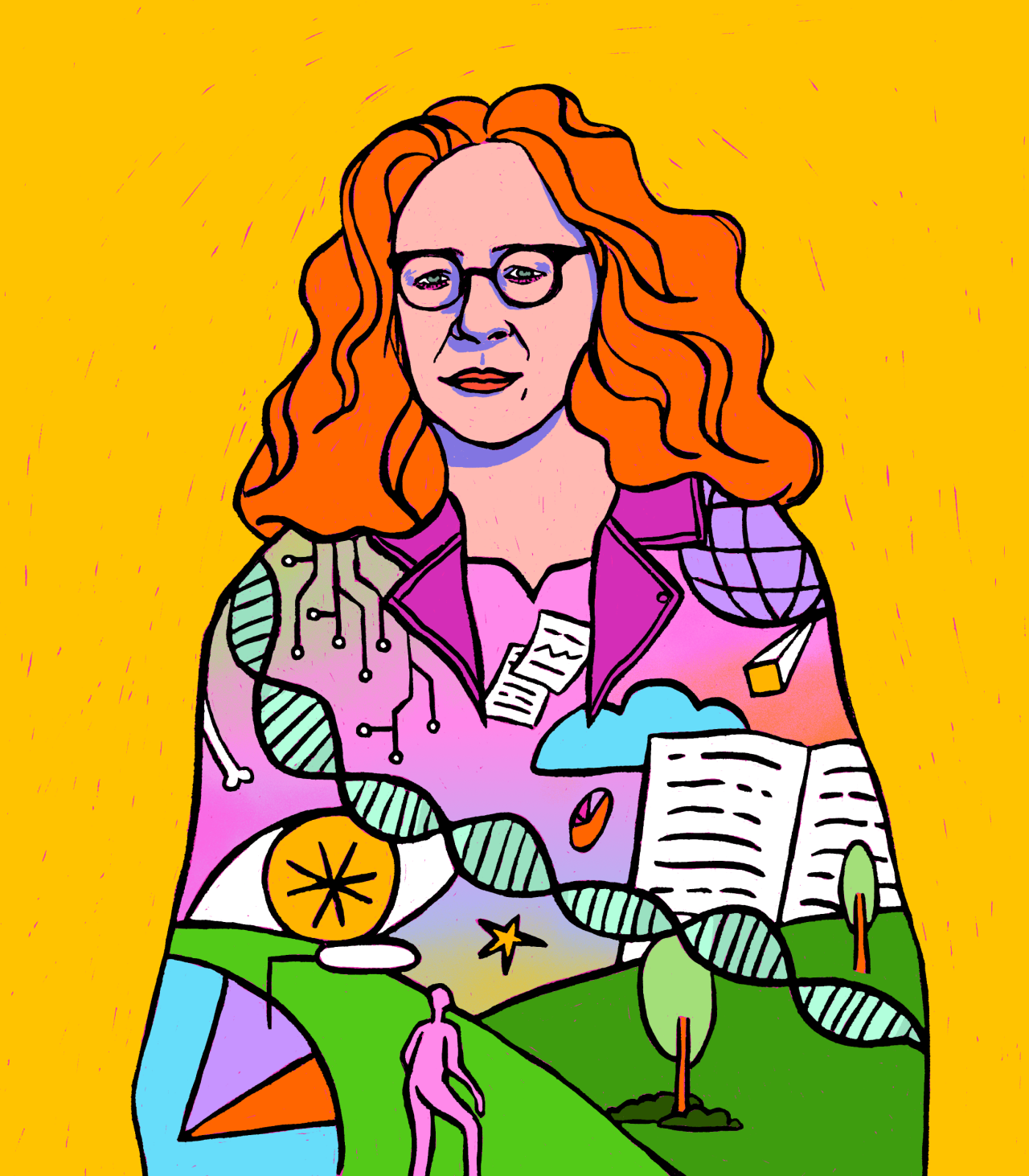
Portrait of Genevieve Bell by Lisa Nguyen
Anthropologist, technologist, and Engineering Professor Genevieve Bell tells us what the future looks like from she’s standing.
“I keep this line by William Gibson in my head most days,” begins Genevieve Bell. “‘The future’s already here, it’s just unevenly distributed.’ It’s a lovely provocation because it means if you know how to find it, you can find the future today.”
Professor Genevieve Bell, a woman with far too many honorifics to list and a trail of letters after her name that seems to grow with each coming year, is seated across from me. A mass of curly red hair sits upon her head. She gestures in a way that gives me the impression she is literally pulling thoughts into the space around us.
From academic anthropology to one of the world’s foremost technological thinkers, Bell has walked the road less traveled and has some of the most acute observational skills to show for it. Her contributions to the field are manifold, but Bell is perhaps best known for her work at the Intel Corporation, where 20 years ago, she pioneered their social-science research division and is widely credited with establishing their User Experience capabilities. Outside of Intel, Bell has been consistently recognized for her work. In 2010, she was named one of the Top 25 Women in Technology to Watch by AlwaysOn and one of the 100 Most Creative People in Business by Fast Company. In 2012, Bell was inducted into the Women in Technology International Hall of Fame, and in 2013, she was named Anita Borg’s Women of Vision in Leadership, to mention just a few of her accolades. To put it simply, Bell has earned her place as one of the most respected people in tech. And though it feels a little bit like requesting the Rolling Stones play ‘Satisfaction’, I’m asking Bell to predict the future.
“In 2020, I looked at Australia on fire, and I looked at the world’s response to that. And I thought, well, actually, this is a future, and it’s here,” Bell tells me. Though her message is alarming, she’s not an alarmist. Her tone is level, her posture relaxed. “In January of 2020, I remember saying to a lot of people; I think we’re in a moment in time when the technologies of the twenty-first century that we’re building our future on will turn out to be surprisingly dependent on technologies of the twentieth century,” Bell recounts. “And those technologies are more brittle than we ever imagined.”
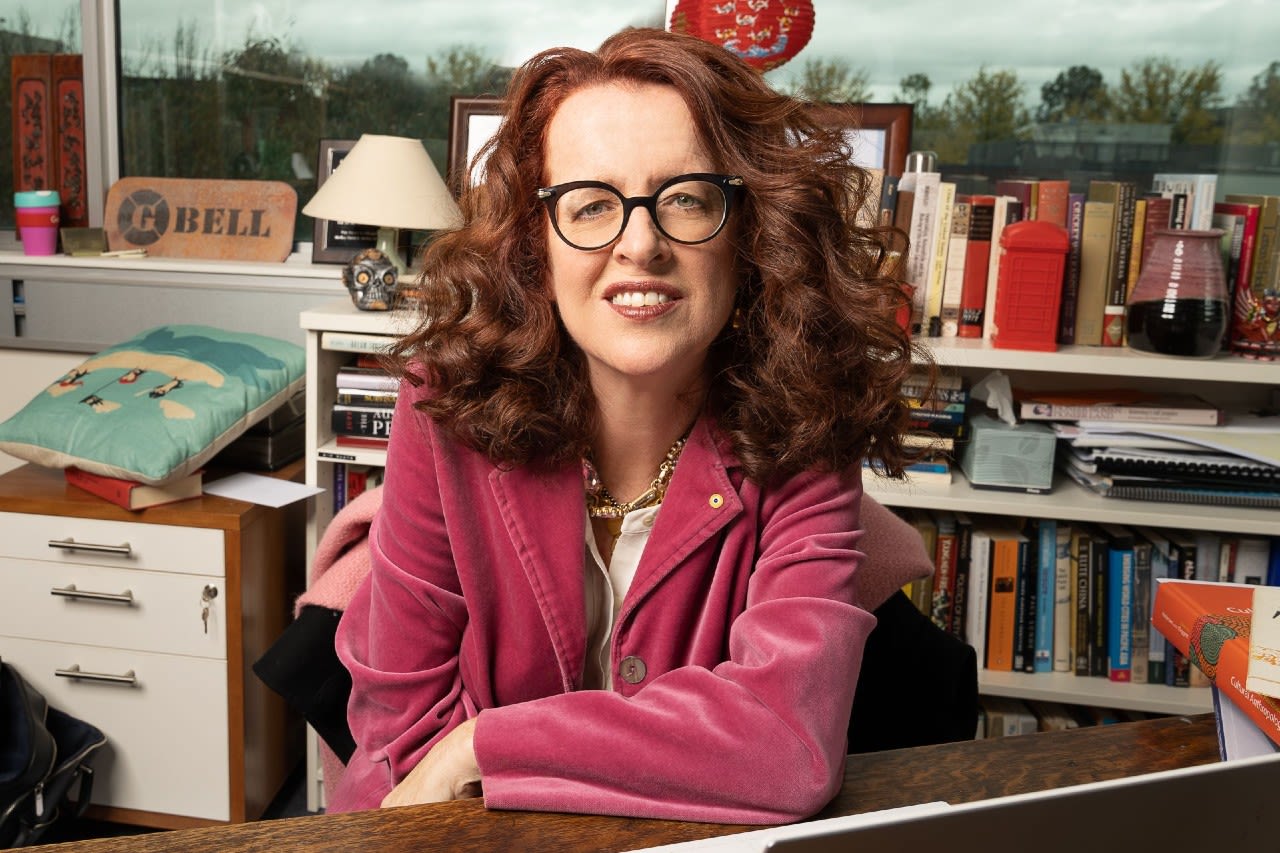
“I think we’re in a moment in time when the technologies of the twenty-first century that we’re building our future on will turn out to be surprisingly dependent on technologies of the twentieth century.”
Born to be an anthropologist
The daughter of renowned Australian anthropologist Diane Bell, Genevieve Bell, born in Sydney, Australia, was destined for academia. She spent her formative years on Australian university campuses, and her mother’s dining room table routinely hosted lively conversations about social justice, political reform, and change. She also spent time in remote Aboriginal settlements in the dusty center of the Australian continent. The combination of all these experiences has left Bell with an intellectual restlessness that would come to define her later years.
Following in her mother’s footsteps, Bell studied anthropology in the United States, receiving her Ph.D. from the prestigious Stanford University in California’s Bay Area in 1998. Her doctoral thesis focused on the Carlisle Indian Industrial School (a boarding school for Native Americans established by the US Government around the turn of the century). A rising star in academia, her colleagues were shocked when she was offered a job at another Bay Area institution—the Intel Corporation.
Technology and culture
Walking into Bell’s office in the 3A Institute at the Australian National University is like stepping into a microcosm of her mind. On one side of the room, Indigenous artworks are propped up against bookcases filled with literature covering everything from Foucault to futurology. Against one wall, there are dozens of lanyards for speaking events hanging like willow branches from a dark lacquered hatstand. Beside the hatstand, a circular traffic sign that reads: “YEAH!”. At one end of the office, a professional ring light for video live streams looms over an old wooden desk. Planning notes for the School of Cybernetics are scrawled in fluorescent pen across windowpanes overlooking the yard below. An assortment of knick-knacks, mugs from prestigious schools, and other miscellaneous swag line bookshelves and desks. Outside of Bell’s office, retro-futuristic murals splashed across the walls beckon passersby. To one side, a large whiteboard with a marker-pen caricature of Bell compares the historical development of the steam engine to the present-day story of artificial intelligence.
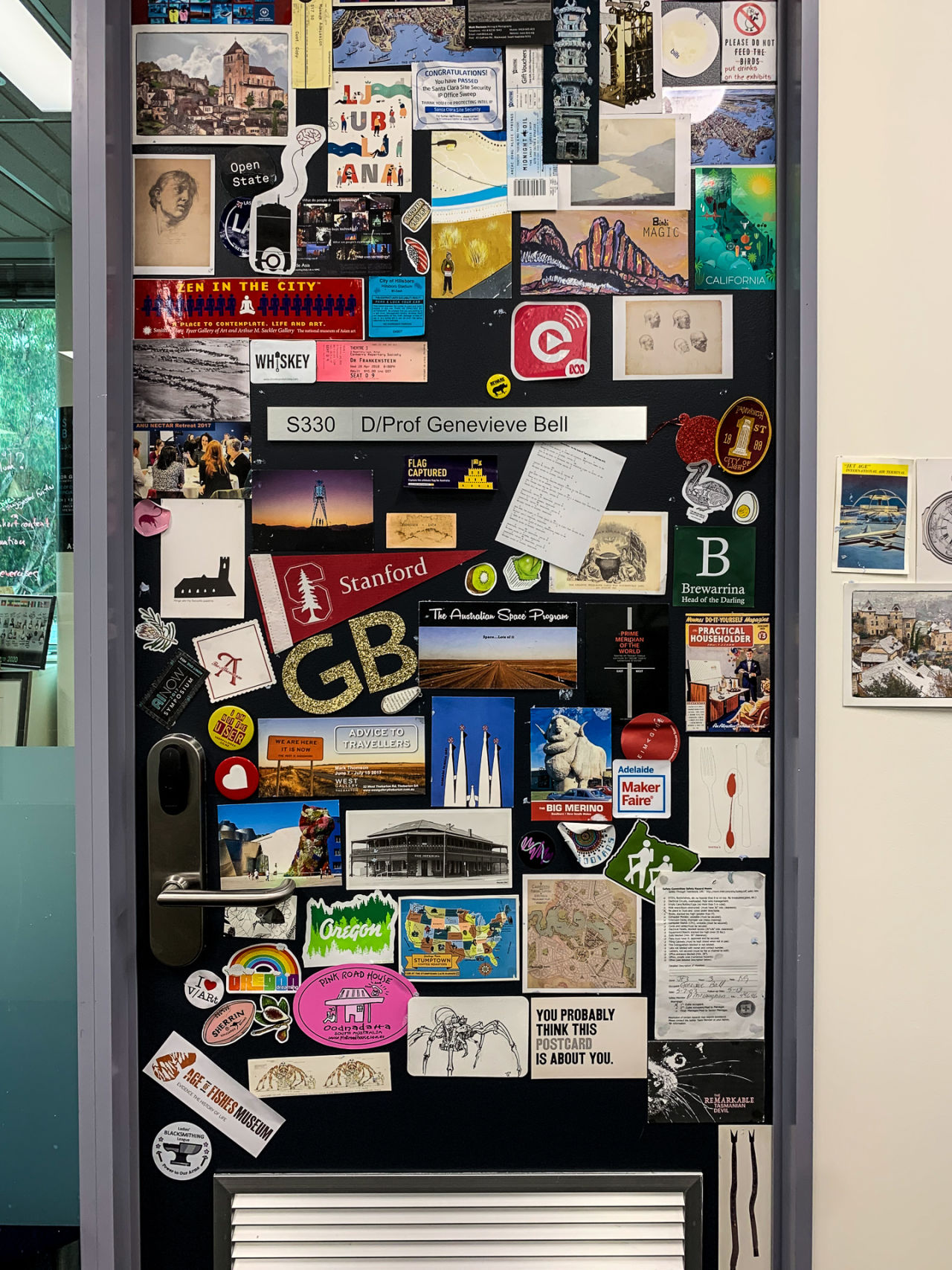
In the office with Professor Genevieve Bell.
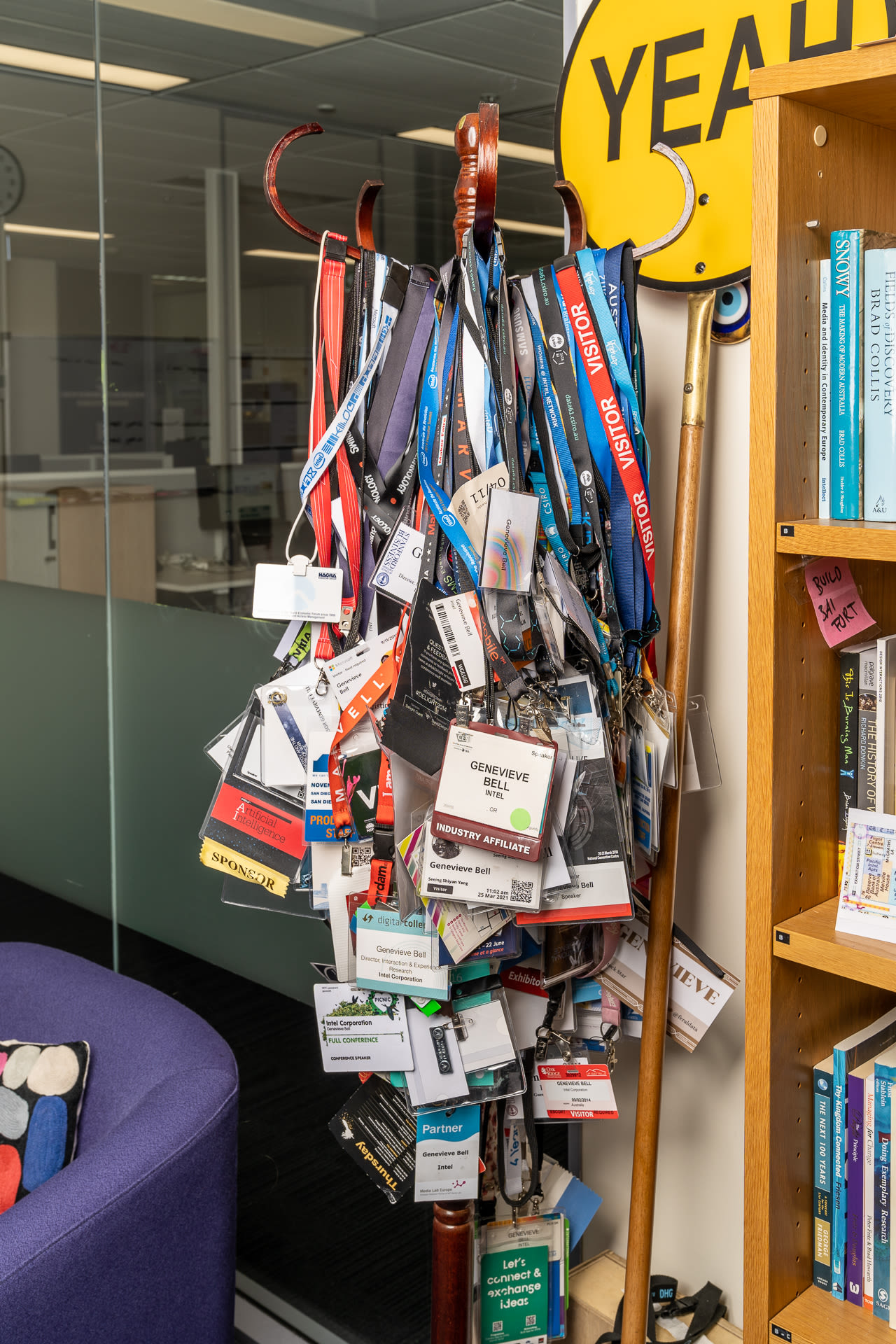
Sitting together in this miniature mindscape, Bell reminisces about her childhood tours through the culturally diverse worlds of the southern hemisphere, drawing a thread between those early experiences and her contemporary work.
“The thing about having grown up in Aboriginal communities and then anthropology departments was in both of those places, you come to realize technology is cultural,” Bell offers. “It exists inside a culture. It is a product of a culture. It carries cultural messages with it. When technology moves across contexts, it takes some of those messages, and it creates other kinds of challenges,” she says.
Conversations with Bell tend to wander. But not in a disjointed way. There’s a deftness to how she draws connections between history, technology, anthropology, society, and economics. Speaking with Bell demands you to be nimble. From our discussion about the culturally constructed elements of technology, we’re suddenly talking about the iconic industrialists who spawned them. “The ways we’ve talked about technology over the past 200 plus years in the West is always to erase the people who’ve made it except the one hero,” says Bell. “So James Watt and the steam engine, Stephenson and the Rocket,” she adds. “We tend to talk about technologies as if they just appeared out of nowhere. We don’t talk much about who funded them, what problem they were trying to solve, whether that problem was a shared problem, or whether that problem sits inside other stories and discourses.”
The veteran researcher uses the story of the steam engine—a recurring technological totem for Bell—to illustrate her point. In the early days of steam engines, Bell points out, the central function of rail transit in Britain was transporting coal from mines to the rest of the country. It made abundant sense to base the technology of the steam engine around locally available coal and water. “So now you’ve created a technology that carries with it in its fundamental constitution the place where it came from—and that place won’t be everywhere,” says Bell. “For me, when talking about technical systems, there’s this important piece of work in both trying to ground them in the places they come from and the places they are built, and also to be mindful about what it would mean to build new ones and carry that baggage forward.”
The future according to Bell
“We were somehow told that electricity was solved. And yet, we watched the lights blink out across New South Wales and Victoria during the bushfires of 2019 to 2020,” says Bell. We’re talking about the future. What I thought would be a discussion about robot butlers and flying cars is quickly turning into a high-level dissertation on the state of modern technical infrastructure. This is the future according to Bell. “In Australia, we watched the electrical grid fail. We watched the telecommunications grid fail. We watched the financial grid fail. We watched the internet fail. We watched civic and civil society not do their jobs,” she elaborates. “And so you suddenly ask, What if the technologies of the twentieth century are brittle and the twenty-first century just can’t be built on those things?”
It is clear we are part of a series of systems. And those systems are both brittle and fragile and unexpectedly deep.
To solve these significant problems, Bell insists we have to employ a “systems viewpoint.” One that captures more than just the technical but goes beyond and implicates people, culture, government, and the environment. Moreover, Bell tells me that increasingly, technology will become more “specific.”
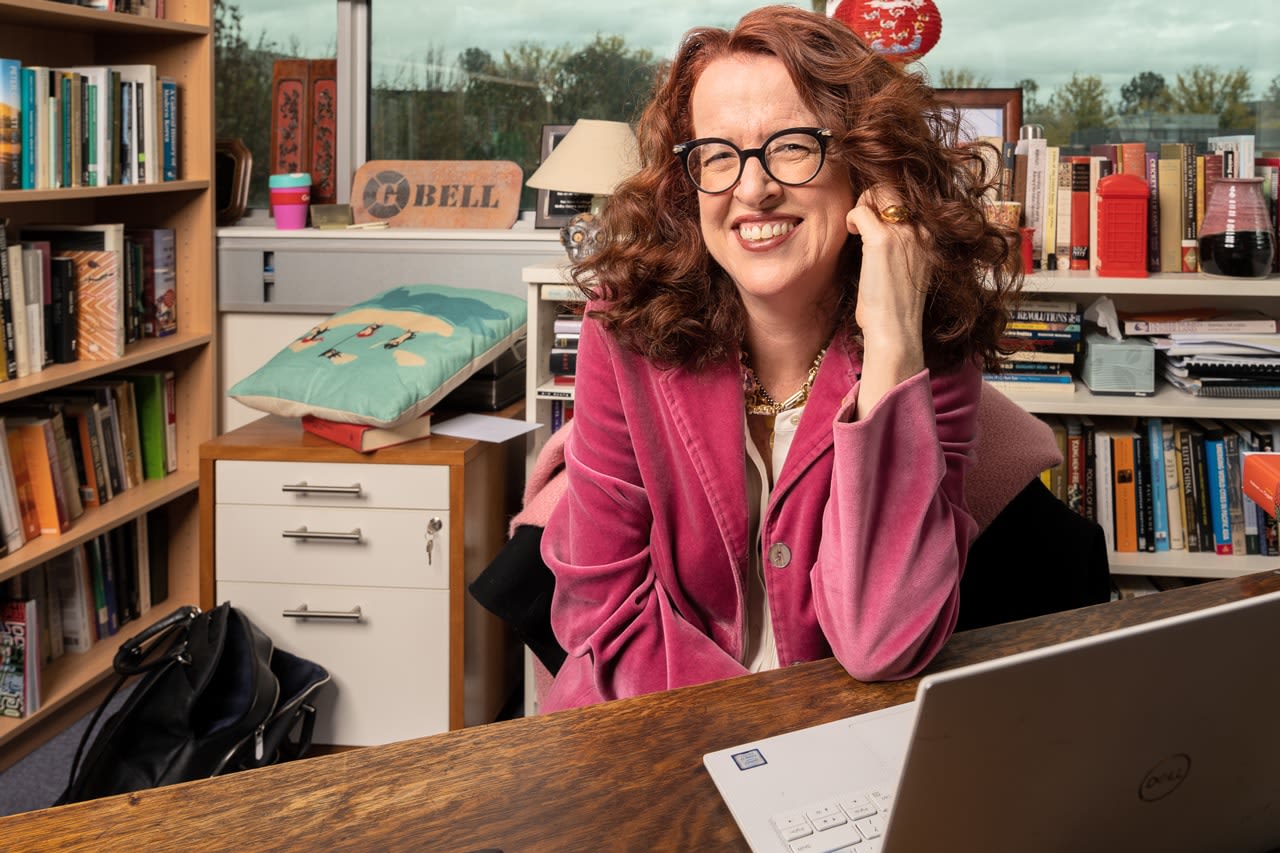
“It is clear we are part of a series of systems. And those systems are both brittle and fragile and unexpectedly deep.”
Deglobalization of technology
“I think it’s really clear in the past year what it means to be Italian during the COVID-19 pandemic was different than what it meant to be Taiwanese was different than what it meant to be Australian,” asserts Bell.
“What we can take from the present is that the stories we need to tell about the future are going to have to be really specific.”
According to Bell, technological thinking will need to be located in a particular place, moment, and time, with a specific set of resources at its disposal. “Gone are the days of broad vision making technology,” she states.
I ask if Bell means we need to start a deglobalization process with technology. She replies in true academic form. “Globalization was just a story. It’s a very good story. It’s a story we told compellingly. But it was never really true,” Bell states. “Things moved across borders, but even a mobile phone in Australia might have had a global brand, but it was connected to a network that had different configurations. It did different things, and people did different things with it.”
There has been a growing localization effort in UX and software over the past ten years. As a result, more products and services are now designed with language and cultural adaptations that make them feel more natural for the end-user. Bell believes this trend will continue to be applied to technical systems “all the way through the stack.”
“That localization could be because of ideas about government. It could be ideas about software capability. It could be because you have to manage a very particular set of constraints and configurations. Of course, we’re still always going to have global companies. But the desire for and the pragmatics of localized answers is an interesting piece of the puzzle at this particular moment in time.”
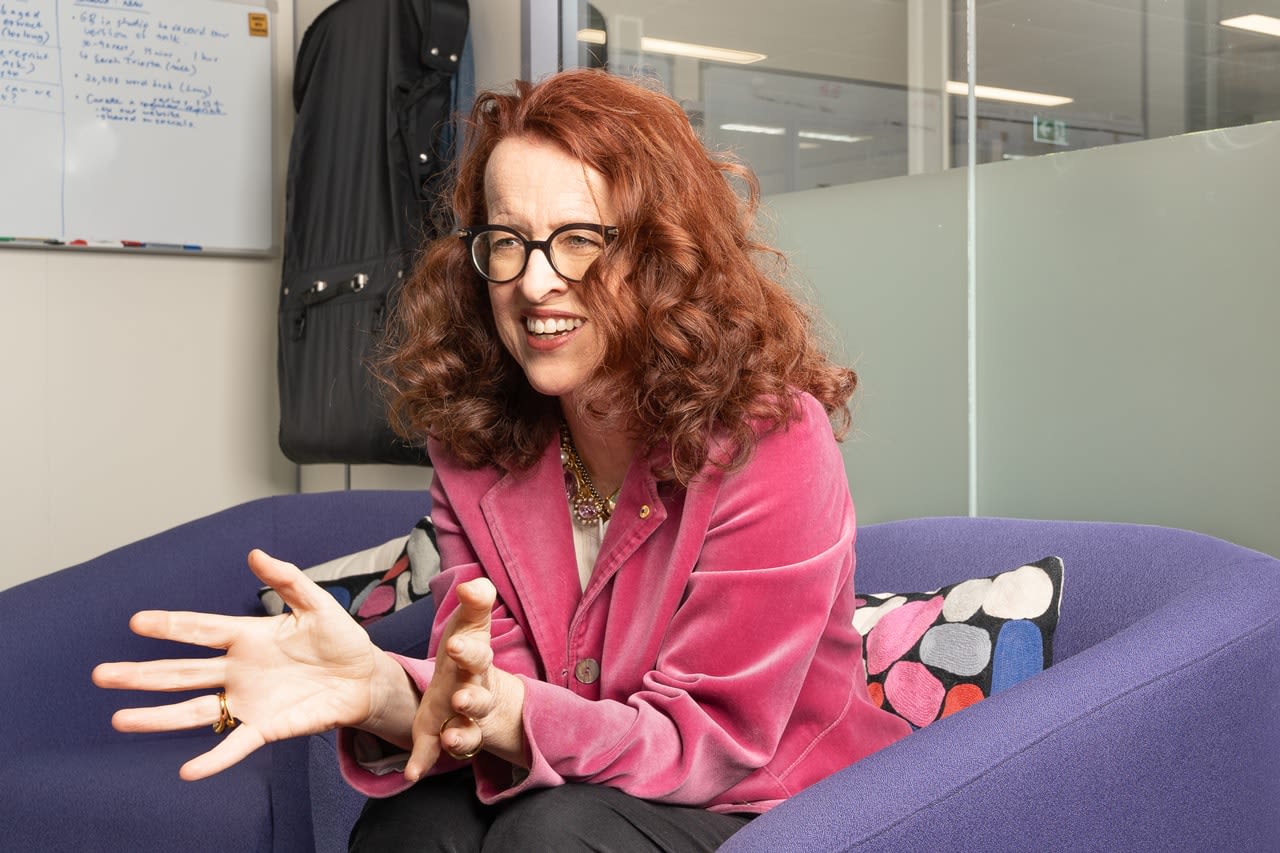
“Globalization was just a story. It’s a very good story. It’s a story we told compellingly. But it was never really true.”
The role of government in tech
In a previous interview with The Atlantic, the writer asked Bell about the future prospects of ubiquitous computing (the integration of computing power into everyday objects and experiences). She responded by stating it was already a reality in places like Seoul. It may have been missed, Bell observes, because rather than private enterprise bringing the concept to fruition, it was “back-ended by a vision driven by city-states about notions of citizenship in the future. It had a form that was more interested in civic good than individual rights.”
This observation gets to the heart of how we think about technology in society today and the differing agendas of public and private organizations. “I think it is important we remember that just as we can operate as consumers, we operate as citizens too,” she reminds us.
Bell points out whenever a government has pushed a particular kind of technology, it’s done in a way that links technology consumption to an idea of citizenship and nationhood. “I’ve often looked at the technical systems governments have backed. Most governments have notions about equity of access,” says Bell, returning to the steam engine as an example. “In the 1800s, when the steam engine goes big in England, one of the very first pieces of regulation was about fare structures. The government understood that as this technology was going to scale, their role was to regulate access to it or to ensure that as many people could have access as possible,” she says.
You think about where the twenty-first century will go in terms of technologies, governments have a responsibility to ensure equity of access. They have a responsibility to ask the question, Does this technical system reproduce inequity?
3Ai and cybernetics
At the end of our time together, Bell and I are wandering the corridors of her latest big idea—the 3A Institute, which sits inside a larger School of Cybernetics at the Australian National University. Her goal is ambitious as ever—establishing a new branch of engineering to safely, sustainably, and responsibly take artificial intelligence to scale.
The Institute has been running for three and a half years and has seen three cohorts of master’s students, and launched its own Ph.D. program in 2020. Recently, Bell pushed to have the Institute incorporated under the School of Cybernetics, the first of its kind in at least 50 years, the first-ever in Australia, and probably the only one ever to be run by a woman.
Some of Bell’s contemporaries, like Oxford University’s Nick Bostrom, who heads up the ambitiously named Future of Humanity Institute, have similar goals to Bell—tackling the development of artificial intelligence through a multi-disciplinary lens that incorporates philosophy, biology, computer science, and governance. Bostrom has stated in the past that AI is the greatest existential threat to humankind.
The idea that intelligent machines are destined to replace humans or, at the very worst, kill us all, is a recurring theme in popular culture. But Bell is pragmatic. Like a true anthropologist, for her, the popular imagining of artificial intelligence says more about our collective cultural experiences than it does about the threat of killer robots.
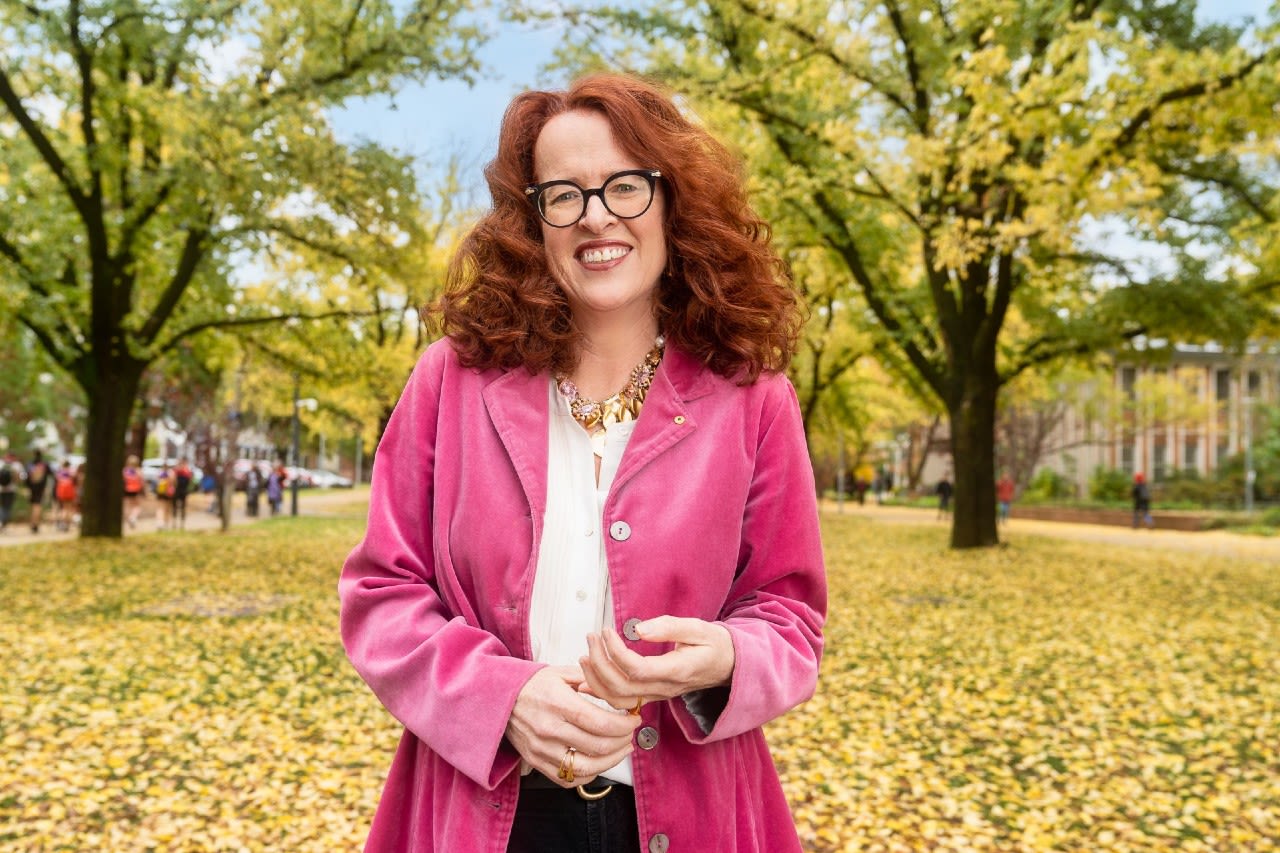
Professor Bell on campus at the Australian National University.
“The arc of the twentieth century is humans watching technical systems be used to do the worst things that humans have done to each other. The idea we might imagine that as part and parcel of that story is not difficult,” Bell affirms. “But I’m sitting somewhere between the ways in which technology occupies our imaginations and the ways it’s occupied our daily lives. And so, it’s always tempting to say people are being silly when they are frightened of robots. But I think you have to say that fear is the product of centuries of accumulated experience.”
Bell argues we can mitigate the risks of artificial intelligence through training, regulation, and law enforcement. Her mission is to create a framework for artificial intelligence to be brought to scale safely. To that end, perhaps it’s a given that she would advocate for a systemic approach to regulating AI rather than doomsday thinking.
Nick Bostrom may be sounding the alarm about artificial intelligence’s threat to humankind, but I get the impression Bell is more optimistic. She disagrees. “I don’t think it’s about optimism or pessimism. I think it’s about knowing that what we have in 2021 isn’t necessarily the world I want for my future,” she argues. “It’s less that I’m optimistic or pessimistic and more that I’m just a builder,” Bell remarks. “Maybe what I’m optimistic about is that we could build something different.”
Subscribe to Outlier
Juicy, inspiring content for product-obsessed people. Brought to you by Dovetail.